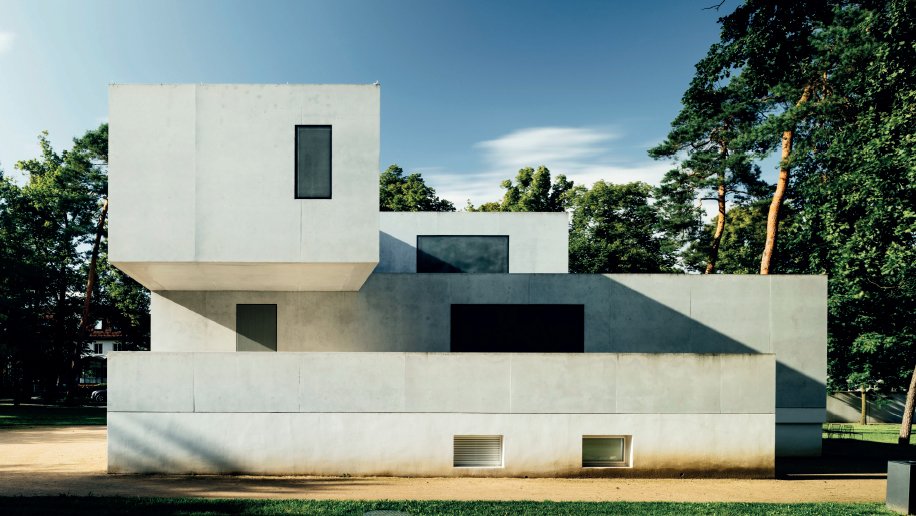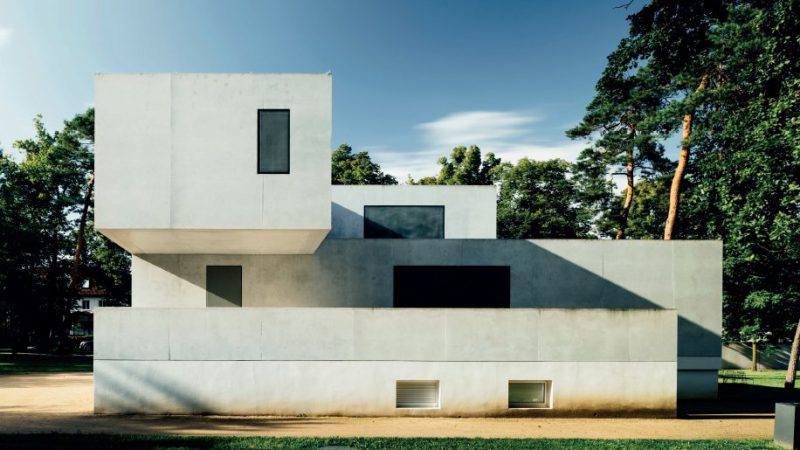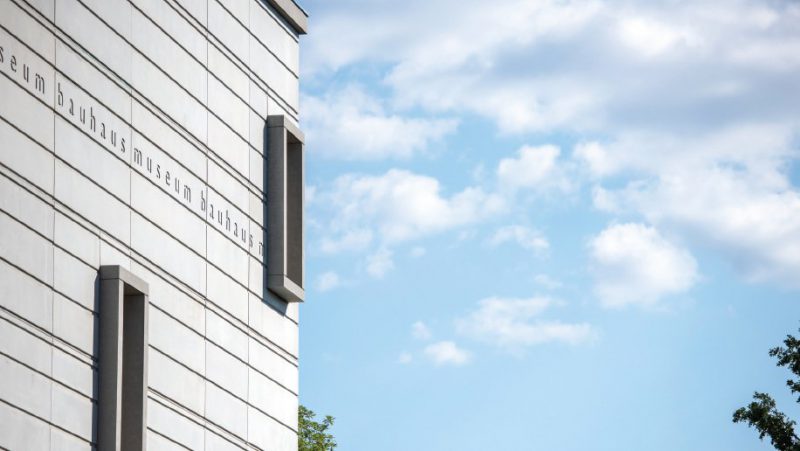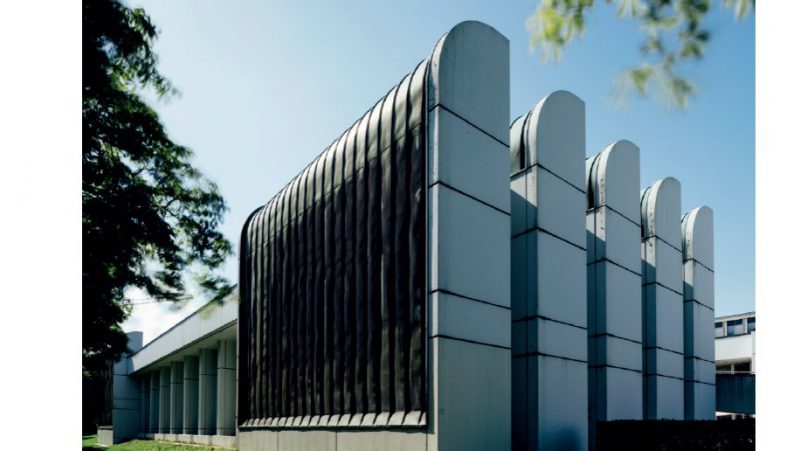Building the Future
Founded a century ago, the Bauhaus art school continues to shape the world we live in today
October 26, 2019


One hundred years ago, in April 1919, the Staatliches Bauhaus art school was established by architect Walter Gropius in Weimar, Germany. At first glance, its spirit of experimentation and regrowth seems out of kilter with that era – Germany was a country broken by the First World War, which had ended only five months previously. Yet 1919 was also a year of progress, with the birth of democracy in the country and suffrage for women.
From the ruins of the conservative German Empire arose a liberal spirit and a taste for cultural experimentation. The shoots of modernism had begun to spring up towards the end of the previous century and the radical idea of unifying form and function, as promoted by 19th-century English designer William Morris, had gained global traction. Likewise, the Bauhaus school was to train its pupils in the total work of art, or [ital] gesamtkunstwerk, [end ital] fusing craft, design and fine arts, and bringing technology into the mix.
Bauhaus’s minimal lines, geometrical forms and restricted color palette went on to shape 20th-century design. The school can count such figures as Paul Klee, Wassily Kandinsky, Anni Albers and Ludwig Mies van der Rohe among its teachers, students and directors. From furniture and architecture to industrial design and typography, Bauhaus left few elements of the creative world untouched.
During its brief 14 years of operation, the school had three locations in Germany – Weimar until 1925, Dessau from 1925 to 1932 and Berlin until 1933 – and three directors, all architects: Gropius, Hannes Meyer and Mies van der Rohe.
In 1933, the rise of the Nazi regime led to its demise, yet rather than stifle the spirit of Bauhaus, its influence was carried further afield as members fled the fascist state – hence the wealth of Bauhaus architecture in cities such as Tel Aviv and Chicago.
Along with the much-anticipated opening of the Bauhaus Museum Dessau, built for the centenary year, there are still some excellent exhibitions to catch both in the UK and Germany – here are a few to consider.
Bauhaus Museum Dessau
Dessau
Home to the world’s second-largest Bauhaus collection – the biggest is in Berlin – this striking building in Dessau (an hour’s drive from Leipzig) is almost as compelling as the exhibits it was created for. The open and flexible architecture embodies the Bauhaus spirit and aims to draw in aficionados and serve as a cultural hub in the city center. The Black Box on the first floor will house architecture, furniture, lighting, textiles, wallpaper and typefaces, all of which reflect the debt owed by contemporary design to the movement. Opened Sept. 8; adults $10.50. bauhaus-dessau.de
Bauhaus Museum
Weimar
Weimar (one hour 45 minutes by car from Leipzig) is the birthplace of Bauhaus and, accordingly, has its oldest collection. You can admire it in the city’s new museum, which opened in April with its permanent exhibition aptly named “The Bauhaus Comes from Weimar.” Works include the renowned table lamp by Wilhelm Wagenfeld and Carl Jakob Jucker, furniture by Mies van der Rohe and artworks by Klee, Laszlo Moholy-Nagy and Lyonel Feininger. Entry $13.50. klassik-stiftung.de

“Original Bauhaus”
Berlin
This well-structured exhibition presents 14 key pieces from the history of Bauhaus, describing the story behind each one and how the creator fused technology and art. Bauhaus-Archiv, Museum fur Gestaltung (the museum’s temporary home is at the Berlinische Galerie in Charlottenburg while renovations take place); until January 27; entry $15. bauhaus.de

“Beyond Bauhaus: Modernism in Britain 1933-66”
London
Three of the movement’s leading figures, Gropius, Marcel Breuer and Moholy-Nagy, came to live and work in the UK during the 1930s; this exhibition will explore their impact on architecture in Britain. Talks, screenings and workshops will also take place. RIBA Architecture Gallery, Portland Place; Through February 1; free entry. architecture.com
“Still Undead: Pop Culture in Britain Beyond the Bauhaus”
Nottingham
What do Habitat founder Sir Terence Conran, performance artist Leigh Bowery and hairdresser Vidal Sassoon have in common? They all took inspiration from Bauhaus, according to this diverse exhibition spanning the 1920s to the 1980s. It kicks off with a colorful light installation by student Kurt Schwerdtfeger before examining the school’s impact on electronic music, club culture and mod fashion. Part of Bauhaus Imaginista, a project exploring the school’s global reach, other exhibitions are taking place in Hangzhou, New York and Moscow. Free entry. Visit bauhaus100.com
Beyond Europe
The modernist movement has two surprising outposts…
Tel Aviv
It may come as a surprise to learn that the Israeli city has the largest collection of Bauhaus buildings in the world, the result of the emigration of German Jewish architects following the rise of the Nazis. Now a UNESCO World Heritage site, the 4,000-plus buildings of Tel Aviv’s White City can be taken in on a guided two-hour walking tour (80 shekels/$22) from Bauhaus Centre Tel Aviv, which also has a free permanent exhibition. bauhaus-center.com
Chicago
When Chicago’s industrial leaders wanted to boost the city’s profile, they turned to Bauhaus for inspiration. Hungarian émigré Moholy-Nagy, one of the movement’s original teachers, was drafted in and the New Bauhaus school was created in 1937. While it only lasted a year, its influence had greater longevity. Mies van der Rohe was also drawn to the city and designed several buildings on the Illinois Institute of Technology campus. Architectural highlights downtown include his Kluczynski Federal Building, Dirksen Federal Building and AMA Plaza at 330 North Wabash; the last of these is home to the Langham hotel. chicagobauhausbeyond.org




